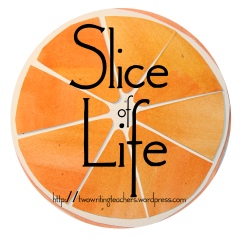Kate DiCamillo, the National Ambassador for Young People’s Literature, claims
“When we read together…we are taken out of our aloneness. Together, we see the world. Together, we see one another. We connect.”
We typically think of stories being in the pages of a book. But they also come in the form of letters. One of my aunts was a great letter writer. This, of course, was pre-email and texting, even before free long distance was ubiquitous. My grandmother always looked forward to her sister’s letters, and she loved sharing them with my mother as soon as they arrived. Thinking of her now, sitting at her kitchen table, reading and commenting on my aunt’s news, has suddenly overwhelmed me with longing.
Charlotte May Pierstorff also longed for her grandmother, who lived “a million miles away through the rough old Idaho mountains.” Her parents had promised her a visit, but when the time came, there was no money for a train ticket.
The solution to May’s problem is told in the 1997 book, Mailing May (Greenwillow), by Michael O. Tunnell and illustrated by Ted Rand. With the help of a cousin who works for the railroad, May’s parents decide to mail her to her grandmother via parcel post. After having fifty-three cents worth of stamps and a mailing label attached to the back of her coat, May boards the train for Lewiston and is off on her adventure.
Tunnell lets May tell her own story, which really conveys May’s excitement about her trip. She describes hanging “on the edge of mountainsides” and crawling “through tunnels.” The story ends with May’s joyous reunion with her grandmother, “with a little help from the U.S. Post Office!”
I knew the minute I read Mailing May that it was perfect for my third grade students. May’s experience was so far removed from anything they could imagine, I wanted to immerse them in this book. We turned it into a springboard for a day’s worth of learning. We discussed the theme of the book, and made personal connections about visiting grandparents far away.
But we also wrote letters to grandparents, even if they lived down the street. We studied a map of Idaho and learned about its geography. In the book, Tunnell describes how the postmaster weighs May, then calculates the cost of mailing her. We were piloting a new math program at the time, and there was a lesson about calculating shipping costs for packages. So I brought in my bathroom scale and weighed each child so they could calculate how much it would cost to ship themselves to Florida (where many grandparents did indeed live).
Each year I looked forward to our Mailing May day. The kids were amazed by May’s story and loved her sense of adventure. And while I can’t say they all loved writing the letters, they all had a new appreciation for our quick and easy communication abilities. More importantly, they also gained an understanding and appreciation of how stories, whether in books or letters, connect us all across distances of space and time.
Thank you, as always, to Stacey, Tara, Dana, Betsy, Anna, and Beth for hosting the Slice of Life Challenge and creating this space for us to share our stories. Be sure to visit Two Writing Teachers to read more Slice of Life posts.



I love how you made this an experience – they will always remember this!
LikeLike
I had never heard of “Mailing May”. Thank you for sharing not only the book but also the way you carried out your plans with students. I am sure they will always remember this experience!
LikeLike
Catherine, this is one book I’ve never heard of. Thanks for telling all about it, and for your “mailing May” day-what a terrific thing to do! Thanks much!
LikeLike
This is a great book. My third graders love it as well.
LikeLike
Mailing May is one of my favorite stories.
Another story you might want to share is – Owney the Mail Dog there are primary sources at both the Smithsonian and Library of Congress.
LikeLike